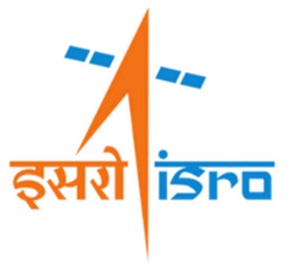History
Thanks to the initiative of its founder-Director (Late) Prof. Vainu Bappu, the Indian Institute of Astrophysics (IIA) has several decades of experience in conducting experiments during total solar eclipses to study the solar corona. In addition, systematic observations of the solar corona in emission lines such as 637.4 [Fe X], 789.2 [Fe XI], 1074.7 & 1079.8 [Fe XIII] and 530.3 nm [Fe XIV] have been also carried out using the facilities available in the Norikura observatory, Japan by Prof. Jagdev Singh. Results obtained from these studies emphasized the need for continuous observations of the solar corona.
2006-2010
In 2006, meetings were organized in Bangalore to discuss observations of the solar corona using indigenous space based telescopes. Indian Space Research Organization (ISRO) offered to provide a small satellite capable of carrying payload of ~40 Kg weight. Considering this, observations to image the solar corona in two emission lines, namely, [Fe X] and [Fe XIV] were proposed by Prof. Singh and his team. After several meetings with the ADvisory COmmittee on Space Sciences (ADCOS) of ISRO, it was recommended that ISRO may consider this proposal and IIA was asked to make the feasibility studies of the payload. At that time, recommendation was for a telescope of ~50 cm size to meet the scientific requirements and optical design. The estimated cost of the payload, after discussing the requirement of components with commercial vendors, turned out to be high. At this stage, it was suggested to develop the payload with the help of different organisations of ISRO. It was decided to develop the detectors in the Space Application Centre (SAC) of ISRO using CMOS chips to meet the scientific requirements. After number of meetings it turned out that the required optical components can be fabricated at the Laboratory for Electro-Optics Systems (LEOS) of ISRO. Detailed discussions with the team at ISRO Satellite Centre (ISAC), now U R Rao Satellite Centre (URSC), helped to understand the thermal, mechanical and orbital aspects of the payload. The feasibility studies were completed and the project was approved by ISRO in 2009.
2010-2013
At that time, the satellite was dedicated to a single payload of Visible Emission Line Coronagraph (VELC) in low earth polar orbit. Around 2010, it was proposed that a bigger satellite will be launched and it will have halo orbit about Lagrange L1 point to observe the Sun 24 hours a day with multiple payloads. In view of the availability of bigger platform and capacity to carry heavier payload by the satellite, it was proposed to enhance the scientific objectives by increasing the observational program. Proposal was made to take images of the solar corona in continuum radiation and perform spectroscopic observations in 4 emission lines, simultaneously. After discussion meeting at ADCOS, keeping in view the weight of the VELC and other proposed payloads, it was decided to make spectroscopic observations in 3-emission lines, namely [Fe xi], [Fe xiii] and [Fe xiv] only along with the coronal images in continuum keeping the imaging system of the payload unchanged. Discussions on additional requirements with SAC, LEOS and ISAC indicated that it is possible to develop the proposed payload. Additional requirement to develop the linear scan mechanism (LSM) to observe different parts of the solar corona in emission lines spectroscopically by scanning the image was discussed with Vikram Sarabhai Space Centre (VSSC) of ISRO and they agreed to develop it.
2013-2022
The requirement of ultra-clean laboratory to calibrate different components of the payload and integrate them to realize very low scatter (~5 ppm) required to observe the solar corona were worked out in the MGK Menon laboratory of the Indian Institute of Astrophysics (IIA) by Prof. Raghavendra Prasad and his team. The data pipeline is handled by IIA. The operation of the instruments onboard the satellite is the responsibility of Indian Space Science Data Centre (ISSDC) and various other centers / laboratories of ISRO. Data pipeline is the responsibility of IIA. Many persons from ISRO and IIA have contributed to develop the payload and their contributions are very valuable.







